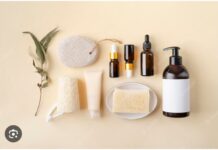If you’re thinking about getting a tattoo, it’s important to know what to expect. The process itself is not painful, but there are some things that can make the healing process more uncomfortable than others. In this article we will discuss the methods for reducing itching and swelling after your tattoo heals.
What Is Tattoo Itching
While itching is a normal part of the healing process, it can also be caused by something as simple as how you wash your tattoo. If you are using a harsh soap or scrubbing your skin too hard, this can irritate and inflame the area.
In most cases, itching is caused by your body attempting to remove scabs surrounding the tattoo. In other words, scratching simply removes the dead layer of skin that has built up around your new tattoo while helping it heal faster overall. Scratching will not make any sort of permanent damage or slow down healing in any way and it’s not unusual for artists to recommend patients scratch their new ink regularly after getting inked so they can keep their tattoos looking fresh!
How To Reduce Tattoo Swelling And Redness
There are a few things you can do to reduce swelling, itching and redness after getting a tattoo. First, it’s important to use a tattoo aftercare cream that contains hyaluronic acid and aloe vera. These ingredients will help heal your skin after the tattooing process has ended. Additionally, you should use an anti-itch cream like Aquaphor or Eucerin Calming Moisture Body Lotion with Aloe Vera Oil to lessen the pain from any itching. If you have trouble finding these products in stores near where you live then consider ordering them online from Amazon Prime so they will be delivered right away without having to pay for shipping costs!
The next step is applying ice packs on top of each other directly onto your new tattoo design when it begins peeling off within 2 weeks of application (only if it feels sore). This will help stop bleeding while also reducing swelling by constricting blood vessels near where they were pierced into place while taking care not too block them completely so circulation remains normal throughout this process which may take up 1 week or more depending on how much ink was used prior when drawing out lines etcetera; however keep in mind ice packs aren’t always needed anymore today since most artists now use lasers instead of needles whenever possible so there isn’t much bleeding anymore anyways but just incase there might still be some slight bleeding after getting pierced through layers upon layers of skin tissue then using iced compresses may help reduce any pain felt afterwards!)
You may also use the TKTX numbing cream (which is a topical anesthetic that works great for most people but make sure you test it on another patch of skin first just to make sure it doesn’t cause any allergic reactions).
Why Does Tattoo Skin Peel
There are a variety of reasons why tattoo skin peels, but the most common explanation is that it’s a part of the healing process. During and shortly after getting your body art inked, your immune system goes into overdrive to protect you from microorganisms like bacteria or viruses that could cause infection. This also means that any foreign objects being introduced into your body, like ink and dyes, need to be neutralized before they can cause problems. The outer layers of skin are shed during this time so they don’t get mixed with the new cells forming underneath them—this is what causes peeling when you get a tattoo!
How To Use Tattoo Aftercare Routine For Your New Ink
Your tattooing process is not over, after you leave the tattoo parlor. You need to take care of your new ink and use a good healing ointment, healing oil or moisturizing cream after every bath.
To make sure that your tattoo heals well and stays beautiful for a long time, follow these steps:
- Apply a topical anesthetic cream before the tattooing process in order to reduce itching and swelling as much as possible during the procedure.
- Use numbing cream after each time you wash your new tattoo with water for about 48 hours (or until the area stops tingling). This will help keep it from getting irritated by clothing or friction during those critical first few days when it’s most vulnerable.
- Once your skin has healed enough so that it doesn’t feel raw anymore when touched lightly by clothing fabric or other light textures like bed sheets—usually within three days but sometimes up to two weeks depending on how thickly applied they were originally–you can begin using alternating applications of moisturizers once per week (at least twice per day) until fully healed…
Numbing Cream For Tattoos: How It Works
Tattoo Numbing Cream works by blocking pain signals from traveling to the brain so that you don’t feel as much discomfort while getting a new tattoo or having work done on an existing one. This type of topical analgesic contains active ingredients like lidocaine hydrochloride which acts as a local anesthetic by temporarily diminishing sensation in your skin when applied directly to it (you will still feel pressure!). The cream contains enough medication to last up until several hours depending on how much area is being treated at once but it can be reapplied if needed throughout this timeframe without causing additional side effects like drowsiness or dizziness because there isn’t enough lidocaine present over time that would cause these effects; however, do not apply again if the initial application has worn off yet because you may run into issues such as irritation from using too much product at once!
Conclusion
Itching is something that can be normal for the first few days of your tattoo healing process. Swelling, redness, and peeling are also symptoms of normal healing but you can use numbing cream for tattoos before and after to reduce these symptoms. To keep your skin healthy apply an aftercare routine after applying numbing cream during the tattoo process.
Write and Win: Participate in Creative writing Contest & International Essay Contest and win fabulous prizes.











